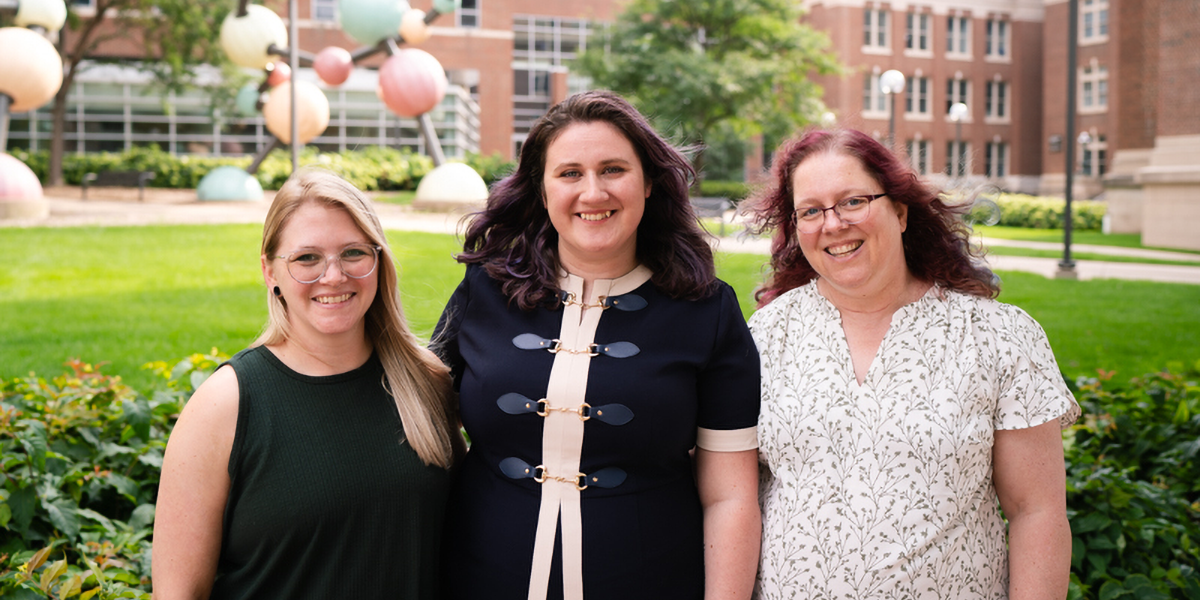
From left: Ariel Steele, Kelly Lane, and Anita Schuchardt received a five-year NSF grant to study graduate education.
Graduate programs vary widely in the way they recruit graduate students and connect them with faculty advisors. Kelly Lane, an assistant professor in the College of Biological Sciences Department of Biology Teaching and Learning (BTL), wants to know if how that process unfolds matters for student outcomes.
Lane wants answers to foundational questions about the practices embedded in the vast majority of graduate programs. “What is the role of graduate education? What are our learning objectives for a graduate student? Why do we do the things we do? These are the questions we want to ask,” says Lane. A five-year, nearly $1M National Science Foundation Innovations of Graduate Education grant will jumpstart her efforts. BTL Associate Professor Anita Shuchardt and Ariel Steele, a postdoc in Lane’s research group, are co-PIs for the project.
The researchers will assess the different ways science graduate students are matched with a faculty advisor and how this process may affect graduate student success, sense of belonging, intent to persist in their programs, and satisfaction with their advisors. They will do this using a national survey of graduate students, as well as interview faculty advisors, graduate program coordinators, and graduate students who switched labs in hopes of forming a more complete picture of the factors influencing graduate student success.
Graduate students are typically matched with an advisor typically either through direct admit, in which they apply to work with a specific faculty member, or to a program with rotations, in which they find an advisor after starting the program. “There are pros and cons to both, but there isn't a ton of research out there that really assesses them,” says Lane, who notes that so much depends on the advisor-student relationship since graduate students’ funding is often tied to research in a specific lab.
“Graduate education hasn’t changed for a long time and there's a lot of room to innovate in graduate education,” says Lane. “The first step in changing the model is to understand how matches happen and the costs and benefits of doing it through different models.” –Stephanie Xenos